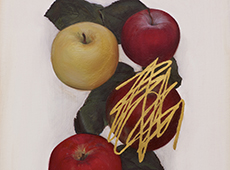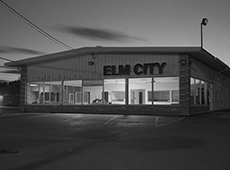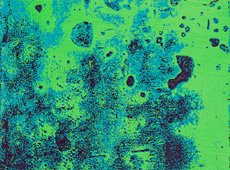During this period, 1995 to 2000, that I created “Outland,” my work gradually shifted from documenting the world to transforming it through the camera and the deeper parts of my mind. At the same time I began to view myself as an artist/photographer rather than a photographer. The photographs came about as a result of an almost theatrical relationship between me and the subjects and vice versa ultimately portraying an existential absurdity.
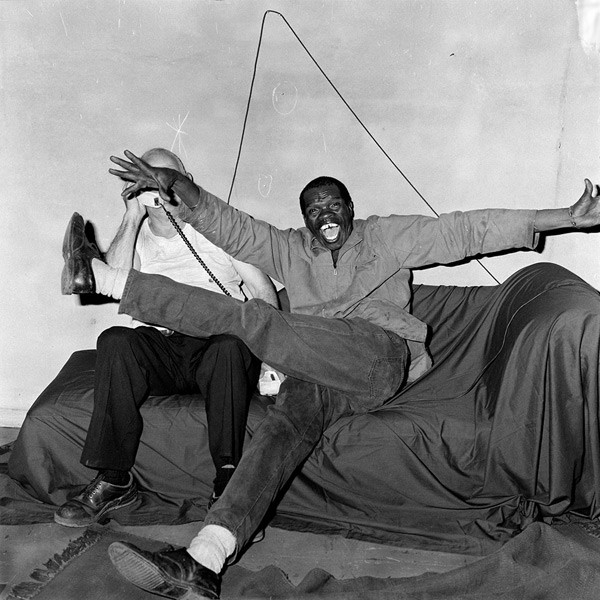
Roger Ballen,
LAUREN HENKINIn both the preface and essay for your forthcoming book, Outland, Peter Weiermair and Elisabeth Sussman describe your process as an active one. Sussman distinguishes between “recording;” using instead, “creating.” Can you describe your active role in the staging of what Weiermair defines as “tableaux vivants?”
ROGER BALLENDuring this period, 1995 to 2000, that I created Outland, my work gradually shifted from documenting the world to transforming it through the camera and the deeper parts of my mind. At the same time I began to view myself as an artist/photographer rather than a photographer. The photographs came about as a result of an almost theatrical relationship between me and the subjects and vice versa ultimately portraying an existential absurdity.
LHSussman writes about your work within the context of photographers Walker Evans, Diane Arbus and Garry Winogrand. Your photographs also have a strong painterly quality to them. I think, for instance, of Caravaggio’s use of form to connect elements in the paintings or in his use of confusion in defining planes and space or, oddly enough, Andrew Wyeth, who sometimes also combined rich texture with uncomfortable subjects. Do you see your work solely in the context of the medium of photography or in the broader scope of art?
RBBeginning in 2003, portraiture disappeared from most of my photographs replaced by more abstract imagery integrating drawing, painting, sculpture, installations, transformed through black and white photography. At the core of my work is photography, but the imagery that I am creating integrates other media. At this point in my career I feel justified in labeling the style behind my work as Ballenesque.
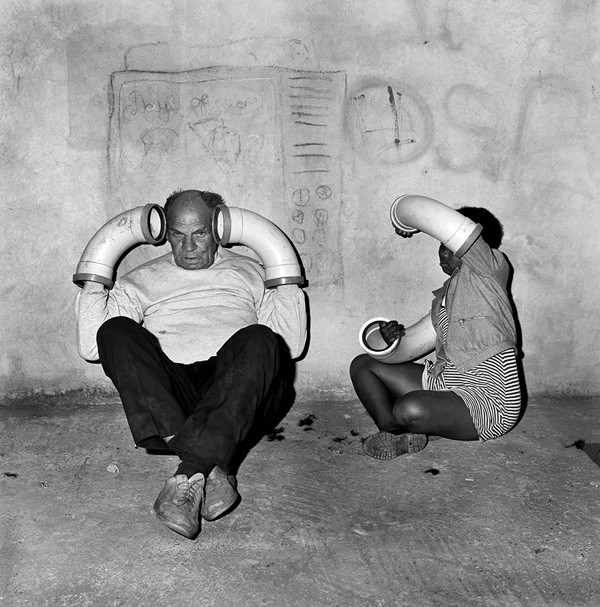
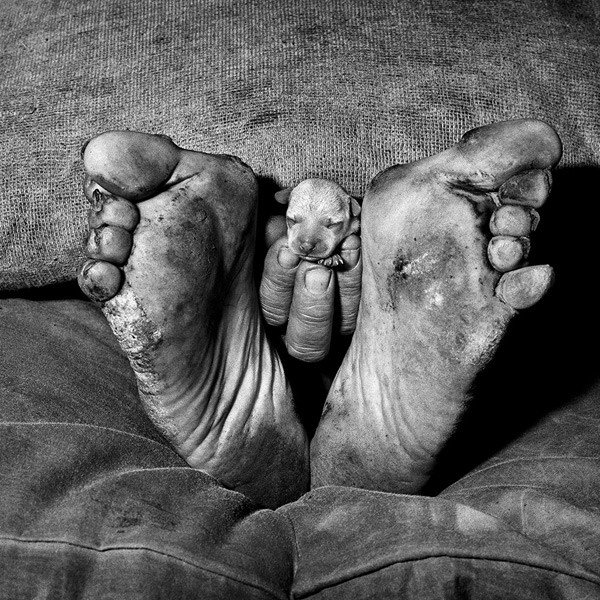
Top: Roger Ballen,
Bottom: Roger Ballen,
Images courtesy Roger Ballen.
LHIn many of the photographs, you draw on surfaces, essentially creating a “ground” for the living subjects. Are the drawn elements acting as purely compositional tools for you, are you interjecting a piece of yourself into the narrative or do they serve a different purpose?
RBNo matter what the photographic situation I am always in the photograph; there is no getting away from this. The world that my photographs depict is ultimately a reflection of my consciousness. A photograph is not very much different than a painting, poem, or drawing as it is a reflection of the artist’s inner mind and no two human beings have the same aesthetic capability. The challenge in photography is to find a modus operandi to integrate exterior reality into an image that contains deeper meanings.
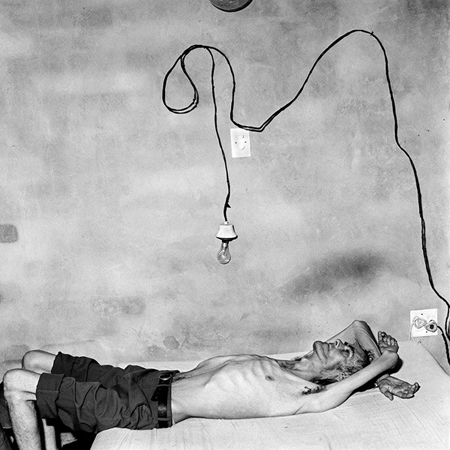
Roger Ballen,
LHIn one sense, you are staging these scenes so that your viewer can develop their own narrative—about the environment, the person/subject, about the conflicts and tensions buried in the subconscious. Yet there is also so much ambiguity; nothing is resolved. The physical spaces feel confined and inescapable, like you are forcing the viewer to confront both the subjects and themselves. Do you think photography’s inherent “expectation of truth” adds to these already complex scenes?
RBPeople inherently expect photography to portray reality. My photographs portray a world that is difficult to classify, as on one hand, there are aspects of documentation and on the other, there is an absurdity that transcends definition.
LHYour formal education was diverse—you graduated the University of California, Berkeley, with a degree in psychology, you studied painting at the Art Students League in New York, and have a PhD in mineral economics from the Colorado School of Mines. Did the diversity help bring a level of complexity to your work that might not be possible if you had only studied photography?
RBMy personality has always been existential. There have been many other experiences in my life that have had far greater impact on me than my formal academic education. From the years 1973-77, I traveled by land from Cairo to Cape Town and from Istanbul to New Guinea producing my first photography book titled Boyhood. Of course, the time I spent at University was important as I practiced mineral exploration as a career for nearly 30 years, enabling me to develop my photography to the point where it became recognized and self-supporting.
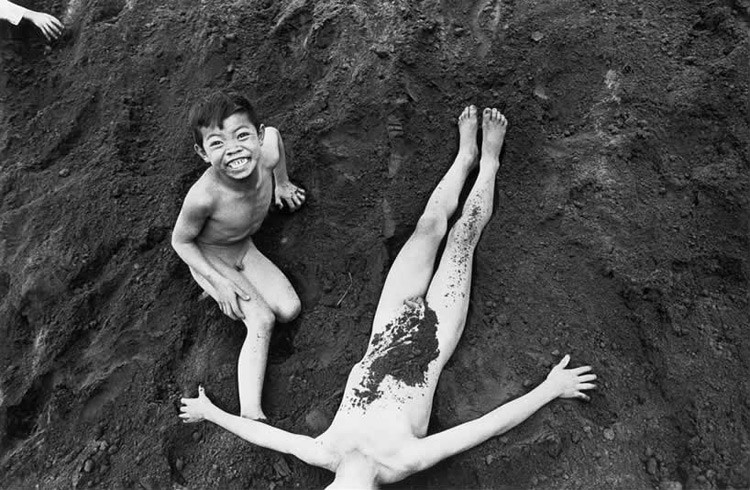
Roger Ballen,
LHThe first edition of Outland was published by Phaidon in 2001. The new edition contains 45 photographs that were previously unpublished. How did you go decide which photographs to add?
RBFor a number of months my assistant and I went through thousands of contact sheets choosing images that we felt were on a par with the previously published ones. To our surprise we uncovered a treasure trove of powerful undiscovered images.
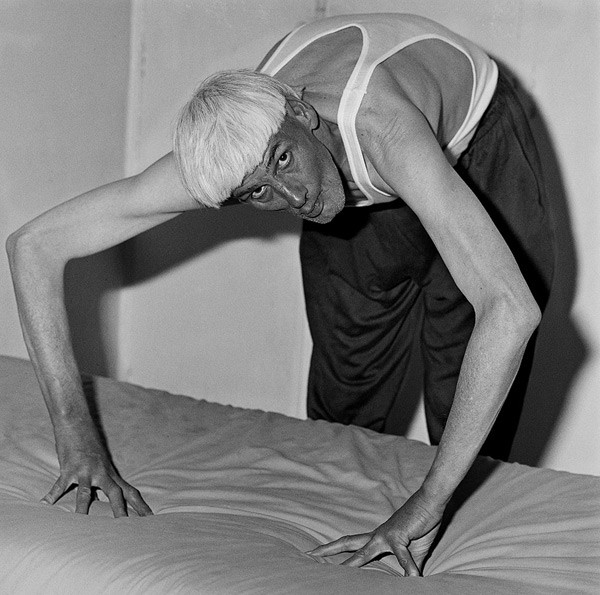
Roger Ballen,
LHBeing republished, nearly 15 years later, has your perspective on Outland or your work in general changed?
RBI realized how clearly this project reflected an essential aspect of the human condition, namely absurdity. Looking back at the Outland photographs has provided me with a basis for recognizing the underlying absurdity in my work which has become more predominant in my later work.
[portfolio_slideshow id=8452 exclude=”8482,8481,8476,8472,8464,8469,8459,8510,8509″]
Born in New York City in 1950, Roger Ballen has lived and worked in Johannesburg, South Africa for almost 30 years. During this period, he has produced many series of works which evolved from photo-journalism to a unique artistic vision. Ballen’s work has been shown in important institutions throughout the world and is represented in many museum collections such as Centre Georges Pompidou, Paris, France; Victoria and Albert Museum, London, England and Museum of Modern Art, New York, USA. His most recent body of work, Outland, has recently been published by Phaidon.
View more of Roger Ballen’s work at the artist’s website here.
Watch the new Outland video by filmmaker Ben Jay Crossman, and find more information about Ballen’s forthcoming book published by Phaidon here.
Read PopMatters‘s review of the first edition of Ballen’s Outland here.
Watch a conversation between Roger Ballen and William E. Ewing here.
Subscribe to Tilted Arc
If you like this story, please consider subscribing. We are sticklers for privacy.
We will never sell or share your e-mail address.

